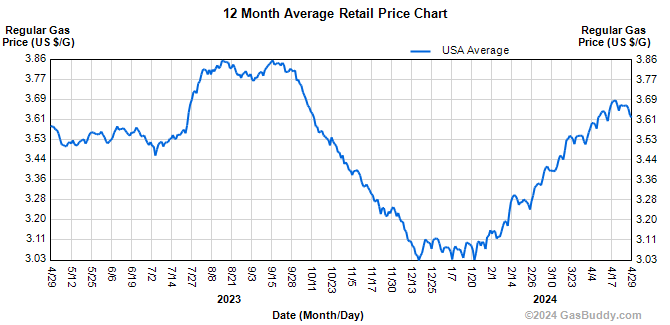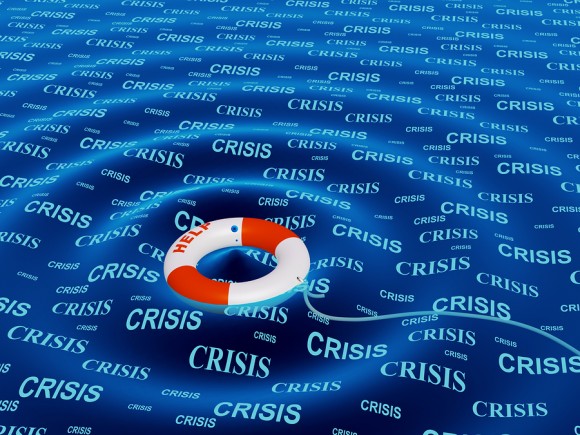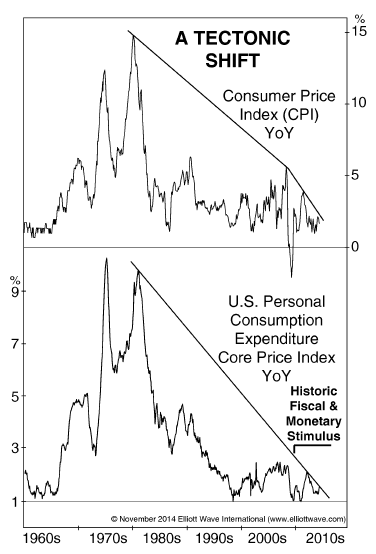The plunge in gas prices over the last six months, from an average of $3.70 per gallon in July to $2.10 per gallon has revealed many truths that you won’t hear being discussed by the MSM or your government keepers. From my perspective, with four cars in the family, this is unequivocally a great development. I estimate it will save me $2,000 per year if prices remain this low.

So why are the financial markets in an uproar over the fall in oil prices? Why are central bankers upset that it will lead to lower costs for consumers? Why is Wall Street and corporate America angry about lower oil prices? Why are government bureaucrats and politicians worried about their tax revenues?
It’s because these people and organizations don’t give a fuck about you. It’s a big club and you’re not in it. What’s good for them is bad for you. They don’t treat oil and gas as a cost of living. They treat it as an investment in which to make billions in profits at your expense. Every person in America is benefiting from the fall in their energy costs. Oil is an input in virtually everything we buy. Your cost of living an every day existence is going down for once. And the oligarchs don’t like it. They pontificate about the dangers of deflation. The danger is to their riches, power and control. Lower prices are a godsend to the average American family that is one paycheck away from financial disaster.
The second revelation is how immense the taxes are on a gallon of gasoline. If you go to this link, you will see the actual wholesale cost of a gallon of gasoline is only $1.27 per gallon. That begs the question, why are we paying $2.10 per gallon?
http://www.eia.gov/todayinenergy/prices.cfm
In PA, I’m still stuck paying $2.30 per gallon, and the reason why is in the chart below. My fine state of Pennsylvania now has the highest level of gas tax in the entire country. They increased it by 10 cents per gallon on January 1, after increasing it by 10 cents per gallon last year. It will increase by another 8 cents in 2017. I get to pay the highest gas taxes in the nation for the privilege of sitting in horrific traffic, blowing out tires after hitting one of the thousands of potholes along my driving route, supporting a bankrupt public transit system and their thousands of union drones, waiting in gridlocked traffic because traffic lights don’t work below 10 degrees, and withstanding six years of construction on the Northeast Extension by union construction workers. Their motto is: We’re slow, but at least we’re expensive.
There are multiple executives from the PA Department of Transportation in state prison for the massive fraud and corruption that permeates Pennsylvania agencies. We pay a 50% union premium for all the road construction projects. On top of the gas taxes, PA has increased tolls by 100% over the last five years. And this was all done under a Republican governor with a Republican legislature. These criminals say the tax money and the tolls pay for the roads, but it’s a crock of shit. It goes into the general fund and is used to pay the gold plated pensions of the government drone workers.
Taxes on gasoline and diesel for transportation by U.S. state in U.S. cents per gallon as of January 2015[3]
| Pennsylvania |
68.9 |
88.6 |
| New York |
68.7 |
73.1 |
| Connecticut |
65.8 |
78.9 |
| California |
63.8 |
65.0 |
| Hawaii |
63.4 |
66.8 |
| North Carolina |
56.2 |
62.2 |
| Washington |
55.9 |
61.9 |
| Florida |
54.8 |
58.1 |
| West Virginia |
53.0 |
59.0 |
| Nevada |
51.6 |
53.0 |
| Rhode Island |
51.4 |
57.4 |
| Wisconsin |
51.3 |
57.3 |
| Vermont |
50.4 |
56.4 |
| Oregon |
49.5 |
54.7 |
| Illinois |
49.1 |
63.9 |
| Michigan |
48.7 |
58.4 |
| US (Volume-Weighted) Average |
48.5 |
54.5 |
| Maine |
48.4 |
55.6 |
| Indiana |
48.3 |
68.7 |
| Minnesota |
47.0 |
53.0 |
| Ohio |
46.4 |
52.4 |
| Montana |
46.2 |
52.9 |
| Kentucky |
46.0 |
49.0 |
| Maryland |
45.8 |
52.6 |
| Georgia |
44.9 |
54.5 |
| Massachusetts |
44.9 |
50.9 |
| Nebraska |
44.9 |
50.3 |
| Idaho |
43.4 |
49.4 |
| Utah |
42.9 |
48.9 |
| Kansas |
42.4 |
50.4 |
| Wyoming |
42.4 |
48.4 |
| New Hampshire |
42.2 |
48.2 |
| District of Columbia |
41.9 |
47.9 |
| Delaware |
41.4 |
46.4 |
| North Dakota |
41.4 |
47.4 |
| Virginia |
40.8 |
50.5 |
| Colorado |
40.4 |
44.9 |
| Iowa |
40.4 |
47.9 |
| South Dakota |
40.4 |
48.4 |
| Arkansas |
40.2 |
47.2 |
| Tennessee |
39.8 |
42.8 |
| Alabama |
39.3 |
46.3 |
| Louisiana |
38.4 |
44.4 |
| Texas |
38.4 |
44.4 |
| Arizona |
37.4 |
51.4 |
| New Mexico |
37.3 |
47.3 |
| Mississippi |
37.2 |
42.8 |
| Missouri |
35.7 |
41.7 |
| Oklahoma |
35.4 |
38.4 |
| South Carolina |
35.2 |
41.2 |
| New Jersey |
32.9 |
41.9 |
| Alaska |
29.7 |
36.2 |
You can see the amount of gas taxes you are paying. A full 30% of the price I pay at the pump is taxes. I’m paying $1,400 per year in gas taxes, on top of all the income taxes, sales taxes, liquor taxes, and the myriad of other taxes I’m forced to pay at the point of a gun. And what good does it get me? It funds this welfare/warfare state that keeps me under constant surveillance and wages un-Constitutional wars around the world.
Remember. What is good for the government, central bankers, Wall Street, oil companies, and mega-corporations is not good for you. Know your enemy.







 The BoJ’s chief lunatic Haruhiko Kuroda with one of his famous diagrams. How can this not work? It looks so neat!
The BoJ’s chief lunatic Haruhiko Kuroda with one of his famous diagrams. How can this not work? It looks so neat!












